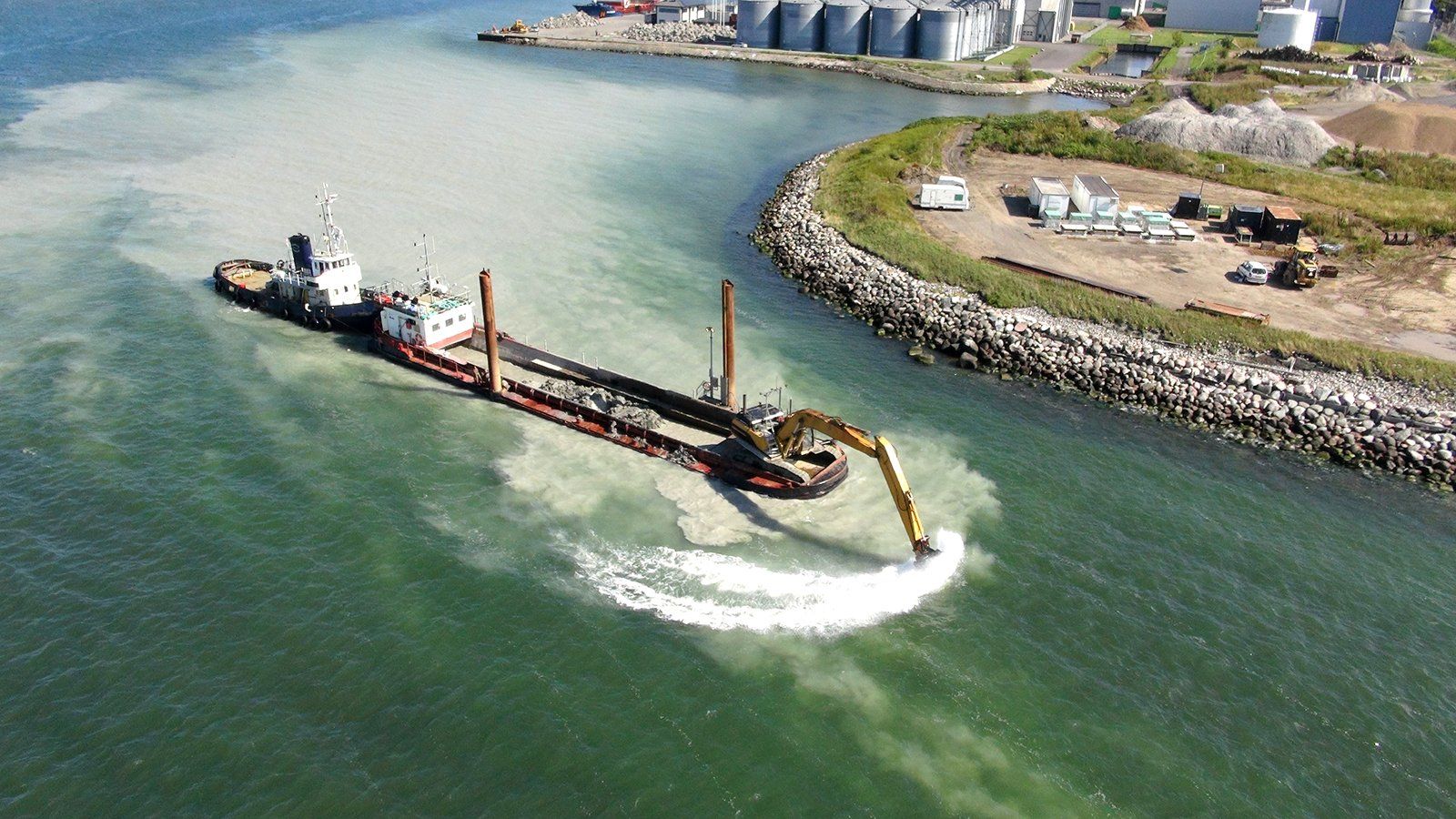Cable trenches
We dig cable trenches
Constructing large offshore wind farms and the associated transformer substations requires that the cables be laid in the seabed, so they are protected. Large submarine cables for data transmission between regions and countries must also be laid in the seabed. We have completed projects where we have excavated trenches several kilometres longs for cables.
Read more about DBB Dredging
These days, cable ships often plough the cables into the seabed for most of the route. However, there may be places along the route where the cable ship is too big for the water depth. In these locations we can dig the trench and cover it again once the cable is laid.
For example, we dug a 16 kilometre trench from Rostock, Germany, to the Kriegers Flak wind farm. The trench had to be 90 centimetres wide and 1.5-2 metres deep. The position of the trench was programmed into our GPS system in the excavator, and even 20 nautical miles out to sea, the operator could see where he had to excavate to a tolerance of a few centimetres. After the cable was laid, we had to cover the trench again.
Cases
From Rostock in Germany to Kriegers Flak wind farm.
16 km cable trench. Width 90 cm. Depth 1.5-2 metres.
Excavation and re-covering.
Cable to Fort Middelgrund in 2019




